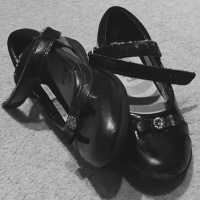D A V I D H O W E


My social work career began as a child care officer in 1969. In the wake of the ‘Seebohm’ reorganisations of social work in England and Wales 1971 I evolved from being a child and family specialist to a generic social worker overnight. In 1976, after a short spell as a senior social worker I was appointed to a lectureship in social work at the University of East Anglia, Norwich on the newly established MA qualifying course. And that’s where I spent the rest of my social work career – happily teaching, writing, researching. I am now retired but still live in Norwich, doing the odd bit of writing, giving the occasional lecture, and carrying out a small amount of advisory work.
I chose Shoes because …
… for me it evokes memories of what brought me into social work in the first place and triggers feelings that have sustained my commitment to the profession ever since.
Bridget had just turned five. She was the eldest of Beverley’s three children. Bridget’s mother had arrived in the UK from Jamaica two years earlier to join her husband but he deserted her only a few months after she had left the Caribbean. Knowing no-one, short of money and living in a small, Victorian terraced house with three small children, Beverley sank into a depression. She followed the advice of her GP and psychiatrist and agreed to go into hospital for a few weeks. It was December 1969. The Children’s Department was contacted and as the child care officer for the case, I arranged for the children to be placed with short-term foster carers. Mum, slowly and with effort, managed to get the children ready. It was when I came to collect them that I noticed Bridget struggling to put on a pair of old, very worn, buckle sandals, hopeless for winter wear. They were too small but they were the only pair of shoes she had. As Mum looked on with a blank face, the gloomy little room felt even darker, drained of energy and hope.
Bridget was deaf. Her mother had gathered her hair into two bunches and tied them with white ribbons. Bridget, though, had a smile that could light up any room and would melt your heart. And she smiled a lot. The welfare assistant and I took Bridget into the city centre and bought her a new pair of shoes. She chose the brightest red pair imaginable. She couldn’t contain her excitement and the beam on her face didn’t leave until we arrived at the foster home
This was one of my first cases. Beverley’s life as a single parent was an early introduction to the sapping effects of what alienation, poverty and loneliness could do to a young mother and a family with few supports. In the event, Bridget and her baby brothers stayed with the foster carers for nearly three months. The foster mum fell in love with Bridget and her beautiful smile. Who wouldn’t? The little girl insisted on wearing her bright red shoes every day. Bridget spread joy wherever she went. She laughed when I showed her a small hole in my shoe and then pointed cheekily to her own brand new pair. Working in an inner city area, I could walk to most of my home visits. There was no shoe allowance but the gradual wear and tear marked the passing of the year, the cases visited, the streets walked.
Empathy is often defined as the ability to think ourselves into the shoes of the other. We cannot know another, so the saying goes, until we have walked a mile in their shoes. To know something of Beverley’s story, to put yourself in her shoes was to begin to know her. And to imagine being five years old and choosing a pair of shiny red shoes is a reminder that joy is infectious and the smallest acts can bring hope, hope and understanding, in lives that all too often are mired in despair and rejection. I often think of Bridget. She will be in her early-fifties now. I wonder if she’s still smiling. I hope so.
David, your piece gave me goosebumps. How strange that, as one of my earliest authors, you and I should both have chosen footwear as our objects.
LikeLike
Hi Jo – lovely to hear from you. Yes, what a nice match/overlap in our pieces. I’ve always thought there was something elemental in the act of walking – whether in sandals or shoes! Indeed there are several books now on the philosophy of walking.
LikeLike
Dear Professor Howe,
I absolutely LOVE everything you wrote, I’m a huge fan of your books. You’ve inspired me to be the best social worker I can.
Thank you!
LikeLike